Graham Reid | | 14 min read
Mark de Clive-Lowe: Brukstep
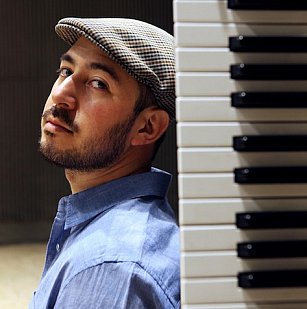
The day we speak to Mark De Clive-Lowe – expat keyboard layer, multi-instrumentalist, producer and remixer – it's in a Grey Lynn cafe and he is on a flying visit home.
It's a Friday morning and he arrived just 24 hours previous from Japan where he'd played two shows, within eight hours he's going to back on a plane heading home to Los Angeles where he has lived for the past five years with wife, the singer Nia Andrews, and their two children aged seven and 11.
He'll get home in time to launch his new album CHURCH in Los Angeles and shortly after he'll be back to New York to do the same there.
So he's a bi-coastal guy now?
“Yeah. CHURCH started as a club night in LA first and then went to the other coast, and now I'm in New York regularly. There's a club called Drom, we've been there for a while but it moves around. Last time when we were rehearsing for the recording sessions we were at the Lincoln Centre so it moves from arts complexes to clubs and jazz clubs, across the board really.
“In LA it's the same kind of vibe. The one this weekend is in a jazz club called the Blue Whale and then at other times we'll do DJ clubs or outdoor summer concerts . It translates really well.
In Tokyo two days ago on the first night I did a show in a jazz club with a trio but the next night was in an electronica dance club and just me solo. So I love having those different options.”
And that trio in Japan, a pick-up group or people he'd worked with before?
“Since 1996 actually. The Tokyo trio was recorded but never released, and while I was announcing these musicians it occurred to me it's been almost 20 years. We might make an anniversary album to document that, because I feel ready for that.”
De Clive-Lowe's career has been worth following: from cubs in Auckland playing hip-hop influenced jazz and working with turntablist Manuel Bundy he made the leap to London and worked in the Broken Beat scene, won accolades from the likes of Giles Peterson (“the man behind a million great tunes”) and took his music global with gigs in, as we shall hear, Budapest, Cuba and South Africa.
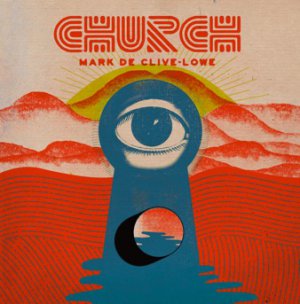 But the new CHURCH album – taking its
name from the club nights he established – finds him at a new
creative peak with a classy cast and him playing piano again after
shunning it for years. The album bridges break beat and House music
with horn charts and pure jazz in an effortless amalgamation of his
various pasts.
But the new CHURCH album – taking its
name from the club nights he established – finds him at a new
creative peak with a classy cast and him playing piano again after
shunning it for years. The album bridges break beat and House music
with horn charts and pure jazz in an effortless amalgamation of his
various pasts.
And the opening track has up-and-comer rapper John Robinson laying out the history of the composer and the CHURCH project. As De Clive-Lowe says, it's like aural liner notes, and “plenty of MCs can rap about how big their bank balance is, but he can really tell the story”.
The album came together quickly as he will explain because “that's how records are made. The great Coltrane albums weren't taking three month sessions.”
He notes that in the past his album Island of Nuvonesia [for Kog in 2000] was just a four hour improvised session in Auckland's Helen Young Studios.
And although it's a flying visit to promote CHURCH he's also hoping to get his US band down to New Zealand to really get the whole live vibe going: “It is important for me to bring the music back here. As much as some people might say, 'He was a Kiwi' or whatever, that's the flag I fly and that's the perception o me internationally. It's always, 'You're from New Zealand' and that's important to me.”
You are playing a lot of piano again?
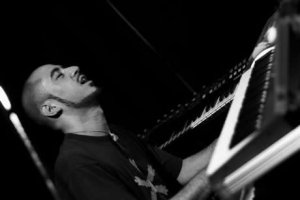 I didn't play the piano for 10 years.
The producer would say, 'Let's put piano on this track' and I'd be,
'Nah, I'll play synths'
I didn't play the piano for 10 years.
The producer would say, 'Let's put piano on this track' and I'd be,
'Nah, I'll play synths'
Because you thought it was an old fashioned idea?
I was running away from the jazz tradition, from jazz as an idiom and I wanted to deconstruct what it was.
I can understand that because jazz as a word is unhelpful because it means so many different things. When you were running away what did 'jazz' mean to you at the time?
I guess it was the opposite of what I was into, the club music where every sound and note seemed functional and nothing was wasted. And in the best improvised music and jazz that is it too, but as a younger jazz musician I didn't get that mentality. It was just lots of notes for me.
Out to impress?
Yeah, exactly. The irony was that I learned that idea, like Ahmad Jamal and the space concept that less-is-more, I actually learned that from playing with house people, not from jazz. But it's ironic how that lesson came back to me.
And then I got back into the idea of improvising because I did a show in Budapest in 2003 and on a drum machine all the beats are always prepared, but it was a long set and we did the encore in the set. Then the crowd wanted an encore.
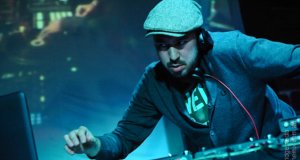 I was saying to the promoter I was too
drunk or too tired or whatever to do an encore, but he made me do it.
So I went on stage with the drum machine and I improvised a live
electronic production. I was so nervous doing that, but when it
happened it reminded me of the spontaneity and improvisational nature
of jazz, and I could see how I could bring all that together.
I was saying to the promoter I was too
drunk or too tired or whatever to do an encore, but he made me do it.
So I went on stage with the drum machine and I improvised a live
electronic production. I was so nervous doing that, but when it
happened it reminded me of the spontaneity and improvisational nature
of jazz, and I could see how I could bring all that together.
I had a jazz epiphany in Budapest with a drum machine!
The beauty of going to the States was that at Nia Andrews' debut show she made me play piano and I resisted . . . but then I loved it and I got reconnected with the instrument. In the US in general jazz is viewed in different terms, it is one of the forms of music that is honoured and upheld.
There's an audience for it.
For me, I felt that in LA I was given permission to reclaim that part I'd been pushing away. I was a bit of a Judas until then.
So you consciously started playing acoustic piano again.
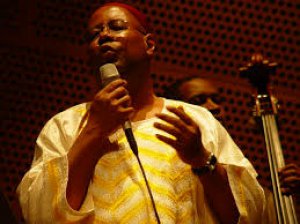 Yeah, there's a singer Dwight Trible [right] and he used to come to the house parties and one day he just grabbed
the mike and after feeling so apologetic [about jazz] I just couldn't
help myself and it sounded amazing. And then he got me in his band,
an acoustic jazz quintet playing a very wide range of dynamics from
very subtle to quite extreme free jazz.
Yeah, there's a singer Dwight Trible [right] and he used to come to the house parties and one day he just grabbed
the mike and after feeling so apologetic [about jazz] I just couldn't
help myself and it sounded amazing. And then he got me in his band,
an acoustic jazz quintet playing a very wide range of dynamics from
very subtle to quite extreme free jazz.
So that was a great chance to reclaim that and reconnect with a purer form of acoustic jazz, which became part of the picture of bringing it into my own projects.
When I hear this album, I hear a balance, it really worked for me. I was hearing something where different things really gel and I love some of those pieces with big charts.
This is the first time in a long time that I sat at a piano and composed. The last decade-plus I've been knocking out beats and certain basslines and the music was stylized to fit certain culture, but with this it was about making music.
There's one track Sketch For Miguel which I had a momentary doubt about putting on the record because I thought it was too beautiful and too pretty top be there, but then I thought it had to be there because it was part of the story.
What I liked is that this struck me like a record of the old style where a different story is being told in every piece but there's clearly the same guiding intelligence behind everything.
For a long time I was getting more into being a producer, especially in the UK, so I was into having guest vocalists. And in a way that was also part of running away from jazz.
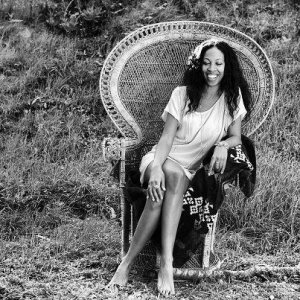 So what was great with this record was
to return to largely instrumental music and limit the vocals to a
point where they stood out dynamically because there are fewer of
them and they are functional. But I get to have the music the lead in
telling the story. Melody and harmony, create that as an engagement.
So what was great with this record was
to return to largely instrumental music and limit the vocals to a
point where they stood out dynamically because there are fewer of
them and they are functional. But I get to have the music the lead in
telling the story. Melody and harmony, create that as an engagement.
But if I was going to have anybody on there it would be Nia Andrews [right].
Did you know what John Robinson was going to say when he started to rap?
I said to him to tell the story of CHURCH, I didn't quite expect him to do that word perfectly line-for-line. Those are like aural liner notes.
So tell me why CHURCH? Which is in caps.
It's a combination of things, it's certainly not a religious thing in any form except to say that if you've every experienced black American churches the level of celebration and uplifting spirit and engagement it is spine-tingling. So there was an elements of that, but mostly it is about celebrating the music and the arts, and just being alive. That's what 'church' is to me.
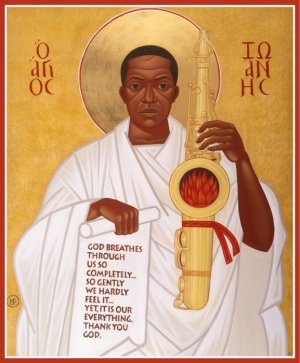 The best church I've ever been to is
the Church of St John Coltrane in San Francisco. I walked in and the
first thing I saw was the stained-glass windows . And where in the
Catholic church you have the saints these were all of Coltrane in
these Catholic gowns and his saxophone with fire coming out. They are
huge.
The best church I've ever been to is
the Church of St John Coltrane in San Francisco. I walked in and the
first thing I saw was the stained-glass windows . And where in the
Catholic church you have the saints these were all of Coltrane in
these Catholic gowns and his saxophone with fire coming out. They are
huge.
And then you have this band playing mid-Sixties era Coltrane stuff, ball to the wall, and the whole congregation is singing Afro Blues. Maybe for me that was the idea of church being a celebration, as opposed to growing up and going to chapel at an Anglican boy's school.
So the idea of the club night was I wanted to share my journey through the course of one night. So we start with acoustic jazz playing Monk and Ellington and flipping that, then over the course of the night I'd start mixing and sampling that and it would morph into a dance party. The cool thing was the jazz heads would come early and they'd stay and see it change into something they wouldn't normally go to, but it made sense in that context because I'd told the story.
The dance people who came early would know me from DJing and remixes. They knew I played piano as well, but then they'd see me tearing the shit out of Monk or whatever and see that morph into a dance party and that made sense to them too. So over a year and a half or so it morphed into one thing . . . and that's the album, which is very much the end result.
Let's talk about specific tracks then. Brukstep. I really love that.
Rhythmically the concept was a head nod to my time in the UK, the whole broken beat scene was called 'bruk' often. It had a house music tempo but also syncopation. It wasn't like a new rhythm or anything but that became significant in that genre. So I wanted o pay homage to that. And at the same time have almost like a Sixties modal jazz theme to it. So it was bringing together the things I like but making sure it was sonically really heavy but also had a lot of . . . I'm told it's very dense.
That's what I liked about it.
Yeah, there's a lot of information in there. Every time we play it live, the moment the bass line drops I hear people react. I don't know what it is, but that happen.
That's the magic, that you don't know why that happens. It keeps it alive and mysterious for you.
I definitely know things that work, which is part of the craft. But especially if you are performing live and i'll start sampling and re-interpolating that live and that gets to another moment which couldn't have existed without the previous moment. But there is a density in the sample and the sonic texture that is magical. Those unspeakable moments like that I love.
Jazz is about that discovery in the moment. Tell me about The Processional which I also really like.
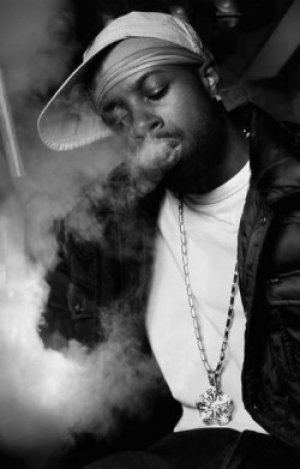 I wanted to pay tribute to specific
people: Alice Coltrane, J Dilla [right], a combination of Joe Henderson and
McCoy Tyner. I had Low Leaf – a wonderful young Filipino girl –
on harp and that brought the Alice Coltrane vibe to it. I wanted it
again to be the modal jazz thing with a hip-hop sensibility and a
sense of freedom. There's no soloing on there as such. But the whole
vibe is that floating in space with hip-hop vibe.
I wanted to pay tribute to specific
people: Alice Coltrane, J Dilla [right], a combination of Joe Henderson and
McCoy Tyner. I had Low Leaf – a wonderful young Filipino girl –
on harp and that brought the Alice Coltrane vibe to it. I wanted it
again to be the modal jazz thing with a hip-hop sensibility and a
sense of freedom. There's no soloing on there as such. But the whole
vibe is that floating in space with hip-hop vibe.
This is coming out on vinyl too?
Yep, double vinyl, end of July.
It's very easy now for people to just send out a download code and leave it at that for reviewers.
Yeah, and that's why I really wanted to have some face-time with people and why I'm actually out there talking about this.
It's me saying how much I care about this project.
Did you not do this on the last one?
No, I've not done this since 2004 because labels won't let you do it. It's like, 'We'll send a zip file' and I say 'What about a promo tour?' and they say they can't afford it. But I'm in control this time.
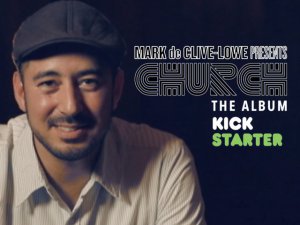 It was funded by Kickstarter. I wanted
to raise $17000 and it went up to $20000, it took a month and it was
the hardest thing I've ever done. Very challenging but ultimately
satisfying because people were saying 'we love what you do, we
believe in you and we want to help you make this next statement'
It was funded by Kickstarter. I wanted
to raise $17000 and it went up to $20000, it took a month and it was
the hardest thing I've ever done. Very challenging but ultimately
satisfying because people were saying 'we love what you do, we
believe in you and we want to help you make this next statement'
And in creating it I didn't feel I had to make it for a certain scene or label, it was 'Wow, I can make this for myself and these people who have shown me they want me to be myself'.
Tell me about Imam by Abdullah Ibrahim, why choose that?
I love Abdullah Ibrahim's work and I've spent quite a lot of time in South Africa the past few years. I love the vibe down there, particularly in Johannesburg. The people are so warm, the black South Africans particularly, in the music circle especially. But even just walking down the street. I'd stay in a part of Johannesburg where a few years, if you weren't black, you wouldn't go. I know that was rooted in some realness but there as also a lot of fear and ignorance in that. But now it's at a point where there is a cultural evolution there which empowers everybody and musically I'm very comfortable there.
What took you there in the first place?
I was offered the chance to tour and on my first trip the craziest thing happened. Get tis, I did a solo live set on friday night television for two hours, with no ads. Prime time.
I don't believe you.
It was crazy. That's South Africa.
That makes no sense at all.
I know, maybe at 3am when no one is watching, but that was it. It was a house music thing, I did a solo electronic set. Someone just asked if I wanted to do it and so . . .
There's this Kwaito youth movement, a house movement, and it's a musical house movement, it's not some kind of techno thing. It is soulful and musical. Little did I know, I had a following down there. I guess a handful of DJs there were tastemakers and they played my music and people were ready for it, it was an amazing welcome.
So you didn't go as an unknown quantity.
 No. The unknown quantity was they
didn't know what I was going to do in a live presentation. But for a
two hour live remix set and everything will be created on the fly.
For people who are used to seeing DJs and all these electronica
artists who just press 'Play' seeing someone hand-making something
for two hours was very different. I'm making live music and shove it
off and don't even save it.
No. The unknown quantity was they
didn't know what I was going to do in a live presentation. But for a
two hour live remix set and everything will be created on the fly.
For people who are used to seeing DJs and all these electronica
artists who just press 'Play' seeing someone hand-making something
for two hours was very different. I'm making live music and shove it
off and don't even save it.
What is it about Abdullah Ibrahim's music that you were drawn to?
For me it's a combination of him and Hugh Masekela's contribution to the race movement but musically it's the same thing I fell in love with in West London where there is this kind of primal music.
It's very percussive piano playing, you know an instrument is being hit to get that sound.
Yeah, and it's got that angularity of Monk but with a rootedness of the South African township sound. I just fell in love with it and started playing it straight away. I was wary about putting a cover on the record and there are only two, so there was that very specific judgement. It's contextualised too though because these are composers I love and they are part of the story.
Then let's talk about the other, Mason's Galaxy.
It's from an amazing album Charles Earland's Leaving This Planet [from '74] and a dream line-up on there of [drummer] Harvey Mason, [saxophonist] Joe Henderson, [trumpeter] Freddie Hubbard . . . it's a spooky track on the original album. I always wanted to cover it . . and actually I submitted it for Harvey Mason's record but for whatever reason it didn't get on. And I was quite happy about that because I could have it.
 I wanted
trombone on it, and that's Robin Eubanks, and he's a very special
musician who does a whole lot of stuff: the M-Base stuff with Steve
Coleman, the Sun Ra things. The connection with him for me came
through his brother Duane who plays trumpet on the record, and Robin
was part of a collective that [expat New Zealand bassist] Matt Penman
plays in. It was all roads lead to Robin.
I wanted
trombone on it, and that's Robin Eubanks, and he's a very special
musician who does a whole lot of stuff: the M-Base stuff with Steve
Coleman, the Sun Ra things. The connection with him for me came
through his brother Duane who plays trumpet on the record, and Robin
was part of a collective that [expat New Zealand bassist] Matt Penman
plays in. It was all roads lead to Robin.
So these are all people you've played with over the years.
Yeah. Duane came in recommended by the drummer Nate Smith who I've played with for a long time. I wanted a certain kind of trumpet player, a combination of Marcus Belgrave and Miles, not a bebop player, not a New Orleans player. And I didn't want a thin trumpet sound. He came through and he loved it because he'd never been part of anything like it before. So for him it was inspiring.
It was quick recording process?
Yeah, two days in New York and one day in LA, they had all the charts, maybe two or three takes of most things. And that wasn't to correct stuff, it was to have alternates. There was a little bit of editing later, and with the electronic elements it was about that happening live with the recording because improvising with the band was part of the story.
You've talked about John Robinson being a story-teller. What's the story you are telling here?
Really it's very much the sum total of my journey to this point. It's a record I've always wanted to make. I did try a few times to make a record where I was trying to bridge the gap between genre worlds but this time I'm not even trying for that. It's just one concoction which is its own thing.
When you look back at your previous albums you can see you were trying to force a marriage?
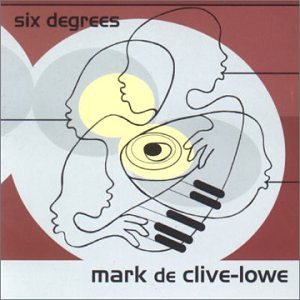 Totally. I think there are three
records including this which are exactly what I wanted them to be at
the time. Six Degrees [on Universal Jazz in 2000] which was basically
a reflection of my previous year of experiences going to London for
the first time and being in Cuba, [influences from] Jazzanova and St
Germain and so on. It was that kind of time.
Totally. I think there are three
records including this which are exactly what I wanted them to be at
the time. Six Degrees [on Universal Jazz in 2000] which was basically
a reflection of my previous year of experiences going to London for
the first time and being in Cuba, [influences from] Jazzanova and St
Germain and so on. It was that kind of time.
The second was Tide's Arising in 2005 [on Columbia Japan] and I wanted to prove myself myself as a producer on that and make an alternative urban soul record for that time, which I felt like I achieved.
All the other records – and there were a fair few of them – were experiments and attempts, you try things and they work or don't work. But something has happened to me in the past couple of years which has lead me to this point and enabled me find my voice.
There isn't a division between the drum machine and the band or the piano and the sample. This album just drew it all together.



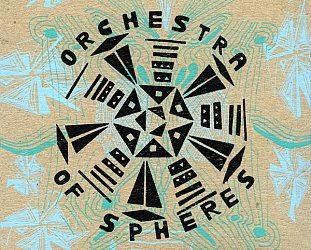
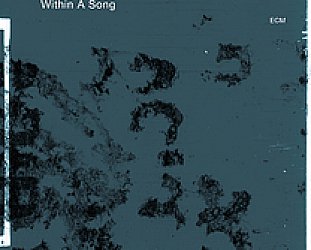

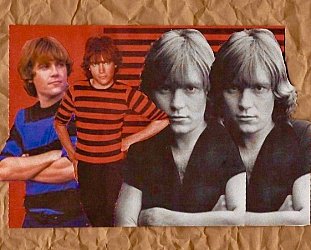
post a comment